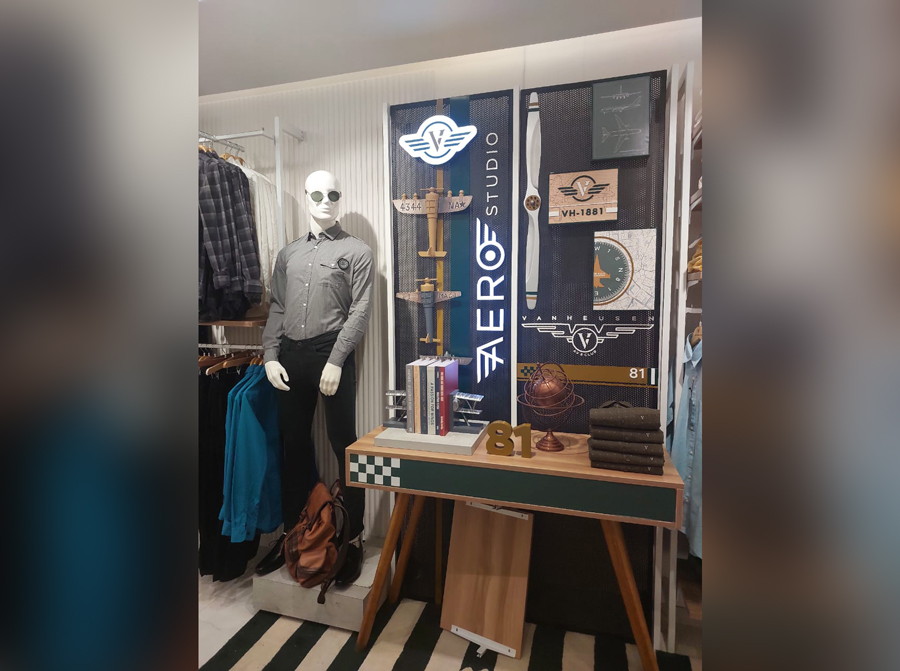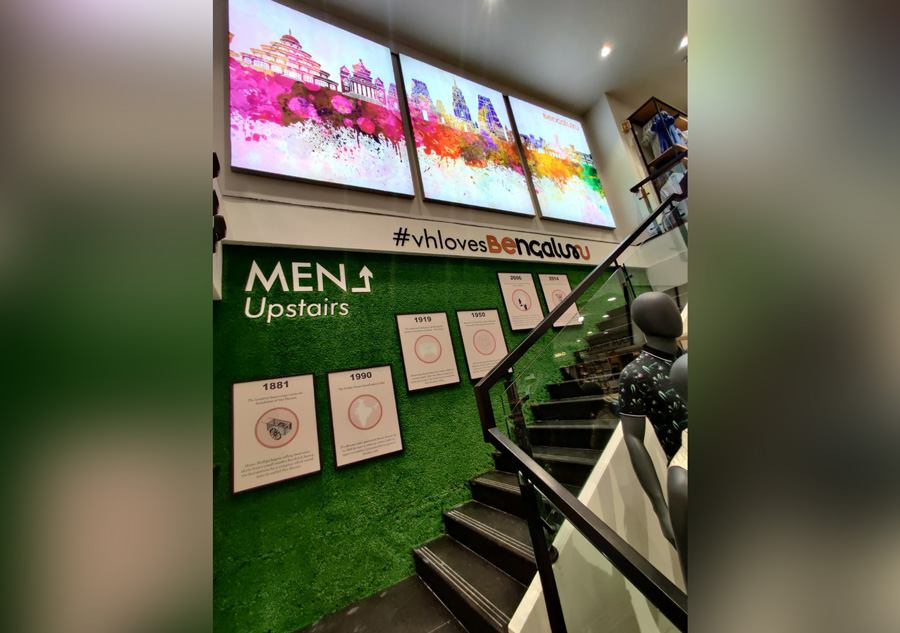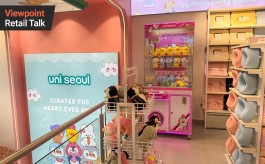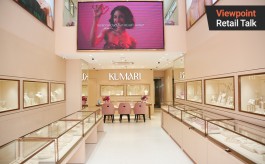‘Share of print coming down in in-store communications’
By N Jayalakshmi | August 08, 2024
Akash Ashesh – GM, National Head- VM, ABFRL, shares with Retail4Growth, the shifting dynamics in store communications and why print may be losing to digital as the preferred medium for in-store campaigns, at least for some brands.

With dynamic shifts in the way shoppers consume and experience brand narratives, retail brands’ approach to in store communications is also evolving. While printed graphics are still a predominant feature of most stores, the scale of their adoption and usage is undergoing changes.
Akash Ashesh – GM, National Head- VM, ABFRL (Aditya Birla Fashion and Retail Limited), shares with Retail4Growth, his observations on brands’ approach to printed in-store communications and the challenges in the whole eco-system.

“Much of the printed communications today are happening more in the large-format multi-brand departmental stores space. Smaller, exclusive stores with area of up to 3000 sq feet have gone more minimalist in their in-store branding, with the focus more on optimising their store space with merchandise.”
As Akash points out, with the pressure on improving cost efficiency and space becoming a premium resource, brands would rather optimise the available space for displaying and selling more merchandise and improving customer experience, rather than use it for printed campaigns. Also, as he observes, given the rapid frequency with which new styles and collections are launched, it is challenging to keep pace when it comes to changing prints.
Lack of consistency and other challenges
But frequency of change is not the only challenge when it comes to printing. “Different vendors use different machines. While some of them have big brands in terms of their machinery, not all do, so there are chances of colour variation and lack of consistency when it comes to quality of the output,” Akash shares.
The other challenge, as Akash points out, is the lack of transparency. “Print vendors are not always upfront, when it comes to showing their capability. For example, when you visit them initially, they might show a factory set-up with good facility, which may not be their own. So, when it comes to the actual printing, they would print on cheap media and this obviously impacts branding.”
Thus, while there are 1000s of printing vendors in the market, finding the right ones that meet the requirement is challenging for brands, who quite obviously prefer to work with trusted vendors with whom they have worked in the past and who, as Akash says, assure warranty and deliver post execution services.

Criteria for vendors selection
Further speaking about the criteria for evaluating print vendors, Akash lists the following:
- Factory set-up and infrastructure capability – the kind of printing machinery in place, and capability for speed and delivery as per requirement
- Manpower
- Cost factor

Sustainability as a factor
While sustainability is the buzz word and a mandatory talking point for most brands, when it comes to making it an integral part of the business practice, there is still a long way to go and it’s the same when it comes to in-store printing.
As Akash points out, sustainability is still not a factor when considering print vendor partners. “We do recommend that the vendors go as environmentally responsible as possible, in terms of their process and materials. But I’d say only about 20-30% of them are into sustainable processes, and these are usually the bigger vendors. The issue with sustainability is that it’s still not too viable in terms of cost, and often doesn’t fit in with the budget. As of now going completely sustainable is not viable for mass production or for multiple stores.”

Digital versus Print
Well, given these aspects, it certainly looks like print faces a big competitor – digital – as is obvious when you look at many brands’ in-store communications today. Digital obviously ticks the box when it comes to factors like sustainability, shopper engagement, flexibility of managing content, etc.
Speaking about this, Akash says, “Yes there is a shift towards digital, but it’s mostly among the MNCs or jewellery brands. For most other retailers with many stores, digital also means high cost, not only in terms of capex, but also maintenance and other factors.”
Besides, as he points out, while content management might be easy with digital, content creation for it could still be a challenge. Also, as he says, the question of print or digital depends on the brand and its requirements. Some brands prefer printed communications, rather than digital screens, especially when their focus is on conveying their heritage and history. But brands targeting younger shoppers go more with digital screens.
But one thing is clear, as Akash says, summing up, “The share of print has definitely come down, at least by 50%-60% in the last 10 years. There is a shift happening towards digital, though it may not necessarily be in terms of screens. Instead, it is more in terms of experiential elements. The thing is, the business dynamics have shifted across the retail landscape. With the thrust on sustainability and interactivity, and the growing need to make every investment yield returns, the focus is on experiential elements that have immediate impact and enable engagement with customers.”









Comments